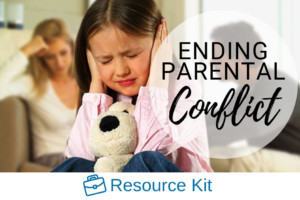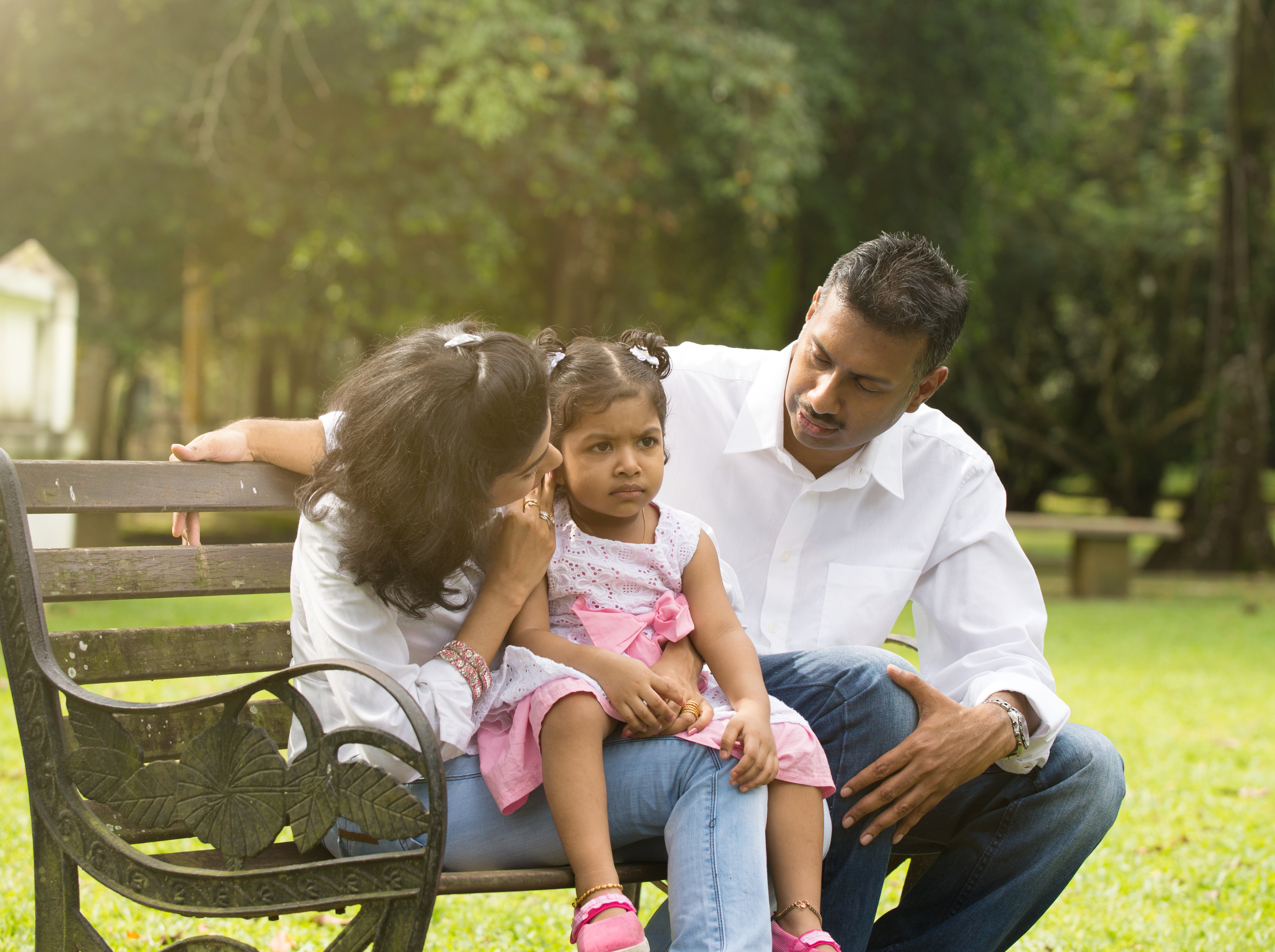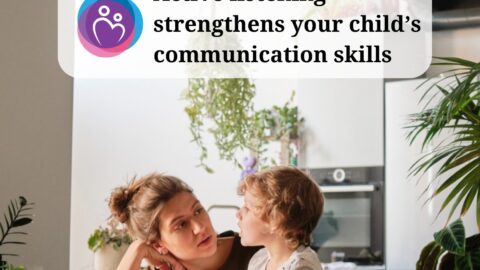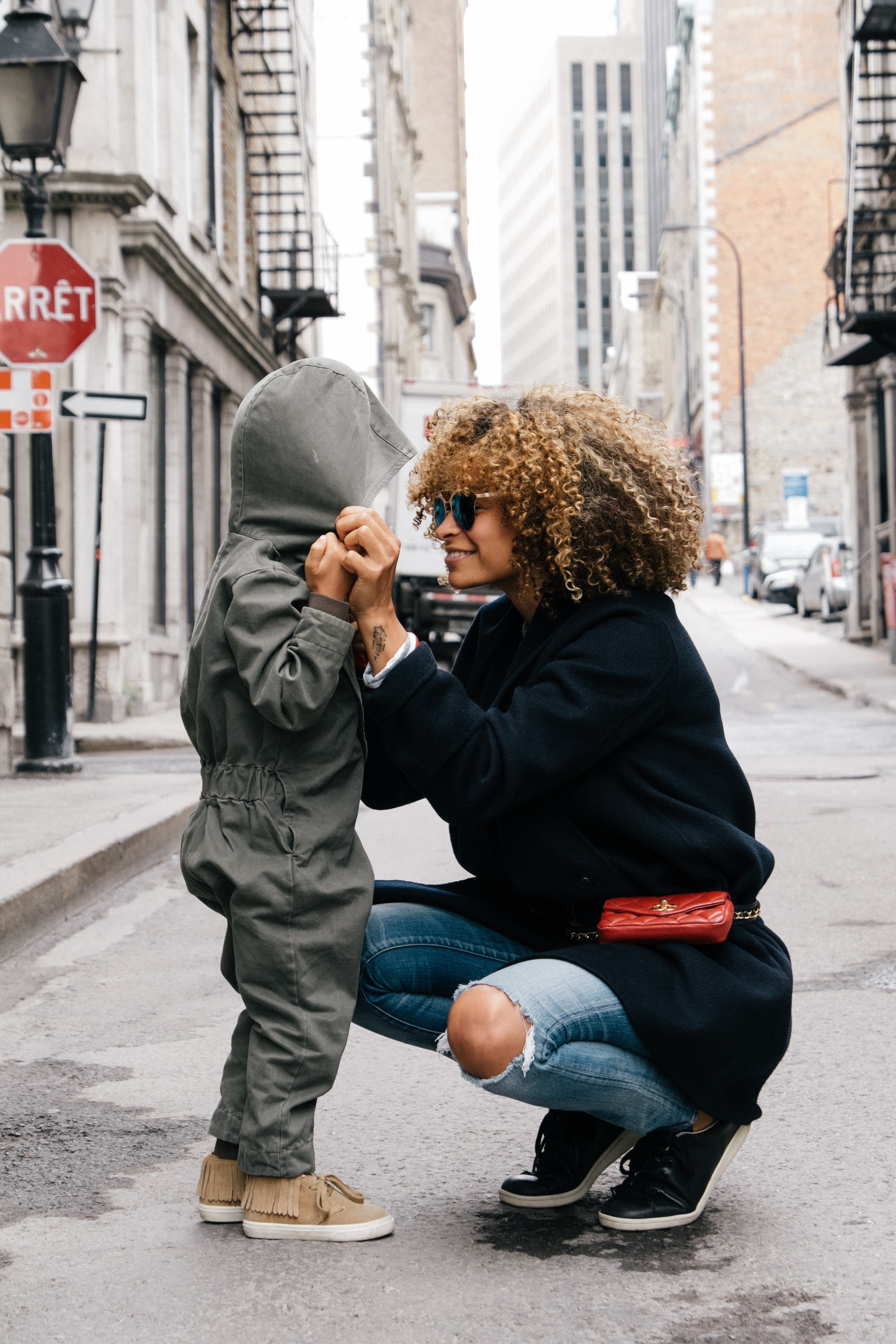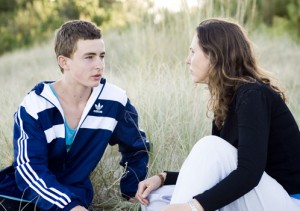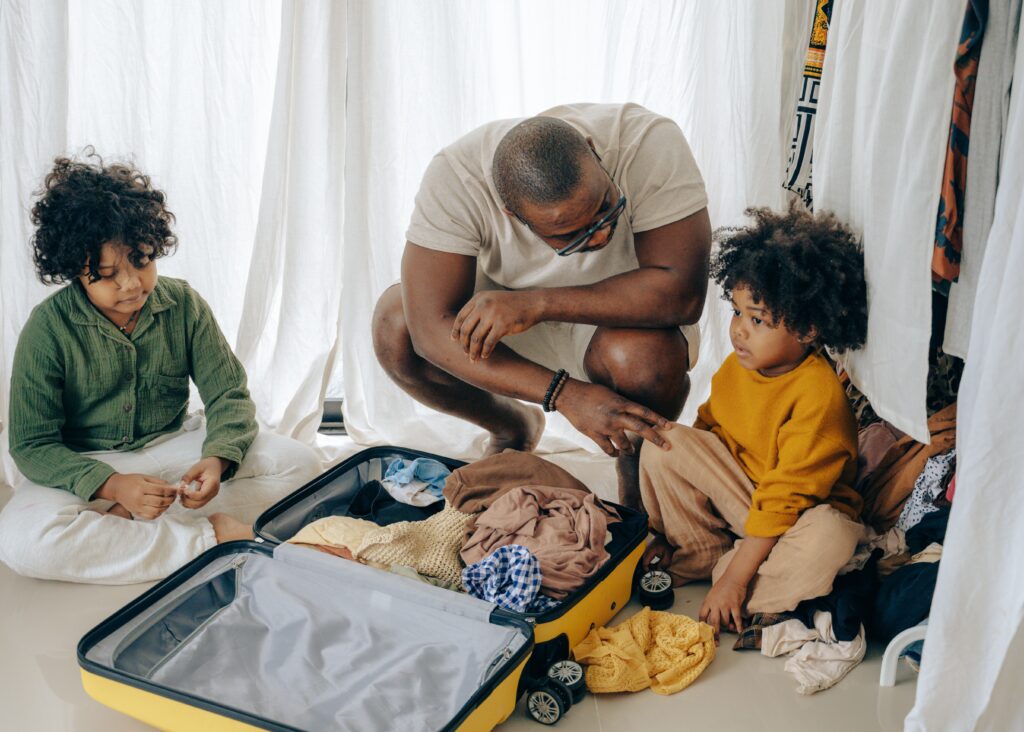 This post was created to answer questions of some of the separated mothers in our peaceful parent village forum dealing with issues related to their child struggling to leave them when it was time to go to their dad’s house. Much of this advice can be adapted for other situations, perhaps you are the father and your child is struggling to separate from you to go to their mother’s house. Or you may be a mother or a father whose child is struggling to separate from you in situations where they need to be with a different carer or to school or a class.
This post was created to answer questions of some of the separated mothers in our peaceful parent village forum dealing with issues related to their child struggling to leave them when it was time to go to their dad’s house. Much of this advice can be adapted for other situations, perhaps you are the father and your child is struggling to separate from you to go to their mother’s house. Or you may be a mother or a father whose child is struggling to separate from you in situations where they need to be with a different carer or to school or a class.
Staying connected when apart.
In these situations, it’s important to think about how the child can maintain that feeling of connection with their parent who they are not with but wish they were with. There may equally be times when the child is with mum when they wish that they were with dad or wish that all family members could be together and are grieving the loss of that which was their normal perhaps even since birth. Children are wired to connect and maintain connection and closeness to their attachment figures. Change should ideally happen in incremental steps for children to help them adapt, and to reduce the potential shock and trauma that comes with overwhelmingly dramatic changes. Adults can forget or lose touch with how the child’s dependency on their parent/s makes them very vulnerable to stress and trauma when they lose access to their attachment figure.
The winning formula that sets them up for success.
Times of change and separation can be very destabilizing for children. To decrease your child’s anxiety and grief, and increase their sense of security, they generally need a gentle balance of you showing genuine empathy for their feelings so they feel less alone with those feelings, holding the limit (assuming it’s a transition that needs to happen) and helping them maintain connection and hold a very clear image of the next time you’ll reconnect. In separating from your child, whether they’re 5 or 15, they’ll need to feel that you really do get how hard this is for them. Children can only bear very difficult emotions when they truly can feel and trust that their parent sees and understands their feelings. It’s important to allow time and space to listen to and truly warmly and sincerely empathise with their feelings before, at and after times of transition.
Parents will struggle to connect with their child’s feelings if they are disconnected from their own feelings.
This expression of empathy that allows a child to feel secure that they are not alone with their feelings needs to be genuinely heartfelt. Speaking the words of empathy “I really get how hard this is for you” will not relieve their anxiety and grief unless you allow yourself to both feel for them and show them that your empathy is heartfelt. In fact an incongruence between words and body language and tone can dramatically add to the child’s anxiety. This is a big ask for parents in situations which they themselves have a lot of strong emotions. Working through our Overcoming Overwhelm course can greatly help parents to process their own pain relating to such triggering situations.
You’ll need to help your child be very clear about what the plan is.
Talk about it the day before and earlier in that day, take them through the steps to help them be able to imagine what’s going to happen so they know what to expect. Be clear about your limit to help them come to terms with the change that lies ahead. Spend quality time with them before the separation to fill up their love tank. Help them truly connect with holding a clear image in their mind of when you will next have contact and what that will look like and make that plan as specific as you can. For instance, you’ll have two sleeps at Dad’s house and then on Sunday you’ll go to church, then have lunch and then I’ll come get you straight after lunch.
I love Gordon Neufeld’s term of “staying together when apart”.
Phone calls can help to bridge the separation.
This is especially in the first weeks of being separated. Both parents might agree who will ring who and when, for instance, Dad and daughter will ring Mum after dinner and before bath time. Then the mother can reassure her little girl that she’s going to be talking to her again later that day or the next day at a specific time (associated with an activity rather than a clock time). It helps to be specific, for instance; “I believe dad is going to take you to that park around the corner from his house/ going to make a hut with you this afternoon. That sounds like so much fun! I can’t wait to hear all about it when we talk after dinner. I’m looking forward to hearing about what you use to make the hut, I’ll want to hear if you invited any of the teddies into the hut and what you played within the hut.” You might buy a new book (even from the second hand shop) for her to bring to dads and for dad to read it with her for the first time. If there’s email communication, you can work on this kind of bridging with him. For instance “I’ve told dad that you have a new book and he’s really excited to see it and read it with you!”. Then at the changeover, you could say to your ex “So our girl is really excited to read her new book with you, you must be so looking forward to seeing it are you?” No matter how staged this kind of thing can feel, if this makes it easier to avoid the awkward tension then it’ll be worth it.
You might also like to read Helping Children Adapt to Change
Transitional objects.
A transitional object is any object that the child is emotionally connected to that holds associations of their connection to the parent they are going to be separate from. They take this item into the situation where they are apart from their attachment figure. Even in counselling I sometimes offer a client (who is in high distress) that they might take an item like a crystal from our counselling room with them when they’re going to be stretched by not having that support over a period of time.
You might set up some creative play and encourage your child to create something to give to dad or the teacher or granny as the case may be. Planning to bring the item and show dad when they next meet can help with the bonding and integrating the two homes. Whether it’s a drawing or a painted stone or a lego house or some shells collected from the beach, bringing that item the child has bonded with to the other caregiver can help to bridge their separate worlds. It helps when both caregivers can talk in a positive tone that’s centred around the child’s feelings and needs. This is also something I often talk with early childhood teachers about, to encourage the child missing their parent to make a picture or to get help with making a card.
Carving out time for quality connection before separation helps to fill up the child’s love tank.
We humans need these bonding experiences to reinforce our sense of secure attachment. Children feel more securely attached when their parent is ARE available, responsive and engaged, and a supercharged way to reinforce the child’s sense of security that their parent sees, cares about and loves them happens during times when the parent is giving their full undivided attention to their child, when they are engaged in an activity that the child truly enjoys and preferably that incorporates physical touch and affection, lots of warm smiles and the child has an outlet for their stress, anxiety and other painful emotions through either laughter or crying/ venting. Parents can spend long days together without the child gaining their parent’s undivided and fully focused attention engaged with the activity or conversation that interests the child. But it’s this super-present focus that brings the deepest healing and builds the child’s sense of trust.
Should we avoid mentioning that which might bring up the child’s feelings of sadness?
Adults tend to want to avoid that which might bring up the child’s upset feelings. This is understandable and it’s important we’re sensitive to our child’s feelings, yet as I talk about in the video below, if those feelings are already there, allowing them to surface while the child feels safe and connected and then allowing expression of those feelings can all help the child to resolve those feelings and hence help them heal. If difficult feelings are expressed but the child doesn’t gain the emotional support they need, the feelings can get harder to feel and face. But positive expression that’s met with warm sensitive heartfelt empathy can be very healing. An expression can be talking, crying, venting, creating, enacting through play, laughter. Hopefully, I’ll explain how this works in the video but we always welcome posts with questions in the forum to gain further understanding or the application of the theory in specific situations.
Photos can help keep the non-present parent alive in the child’s mind.
One of the most distressing things for children in situations of parental separation is when they struggle to hold a picture of their parent in their mind, this can make them feel scared of losing their parent. Some children can gain lots of comfort from carrying pictures of the parent and child together. Or those pictures being up in the other parent’s house. Perhaps talk with your ex and encourage them to remind your child about the picture. Both parents could practice habits like talking about what their other parent would want to do if they were here; “I wonder which ice-cream Dad would pick if he was here?” Or “hey before we start eating, do you want to get the picture of yourself and mum and put it on the table?” Then parent and child could both talk to the absent parent while eating, the more light-hearted communication you bring in the better to help the child keep their connection to their parent alive while apart. Dad might say to the picture “hey mum look how much our baby girl is loving the yummy pasta meal I made! It’s the same pasta meal that you sometimes make” then maybe humorously and dramatically add “but sorry to say Mum that I definitely make better pasta than you!” to elicit the laughter. If both parents can agree to bring in positive communication and connections about the other parent, it will really help the child bridge the separation at both homes. Every opportunity to mention the other parent in a light and warm way and that focuses on the child’s feelings and needs can all help the healing process.
Genevieve Simperingham is a Psychosynthesis Counsellor, a Parenting Instructor and coach, public speaker, human rights advocate, writer and the founder of The Peaceful Parent Institute. Check out her articles, Peaceful Parenting eCourses, forums and one-year Peaceful Parenting Instructor Training through this website or join over 90,000 followers on her Facebook page The Way of the Peaceful Parent.
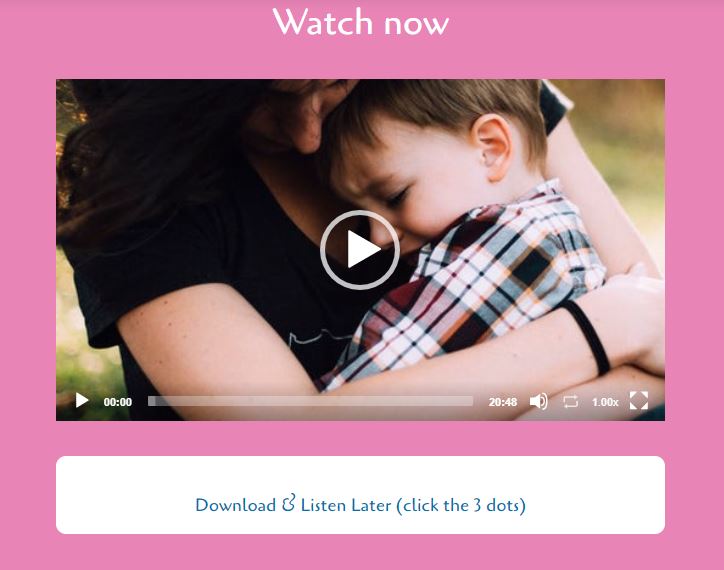
Helping 3 y.o. with separation anxiety following parents separation
In this video in our member’s resource library, Genevieve responds to one of our members whose child is really struggling with separating from her when she goes to her dad’s house. She’s in a shared custody situation. In the video I mostly talk about how to help her three year old daughter to feel, express, mobilize and process some of her feelings of anxiety and sadness and powerlessness relating to having to go to her dad’s house when she just wants to stay with her mum.

If you are overwhelmed and wonder what to do…
Be reassured you are not alone. As parents, we all have these times when our ‘volcanoes are about to erupt’. We strongly recommend the Overcoming Overwhelm eCourse if this is a common experience.
This will help you to:
- explore factors that lead to overwhelm
- make a plan around daily self-care and stress reduction
- learn mindfulness techniques to care for your inner child who can feel so very overwhelmed and powerless
- gain clarity around what you can do to come back to feeling calm and safe in moments of crisis
- and cover repairing the connection with your child after ruptures.
This video ends quite abruptly as I ran out of time, so I’ll add another couple of thoughts here…
Firstly, our ending parental conflict resource kit is a good place to visit if you need ideas for improving communication with your co-parent. (Be it your partner or your ex.)
The more upset there is, the less trust there is and the more difficult and risky communication becomes. Relational distress can trigger so many painful unresolved wounds from both past interactions in the relationship as well as in those early years of childhood. This is all so much to manage. We all deserve to gain release and relief from heaviness in the heart, lumps in our throat, anxiety in the belly, that icky shame that can be so debilitating, the head wreck of mental confusion and the exhaustion of all that inner conflict.
Although the Parent Suite doesn’t and can’t replace therapy, there’s a lot of support and helpful resources for you. I also recommend looking at the resources in our Self-Healing group.

